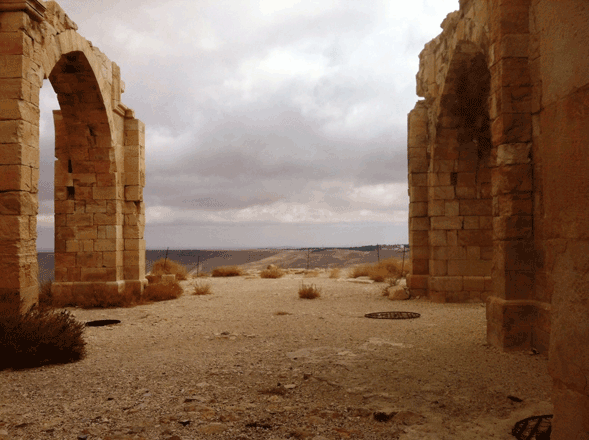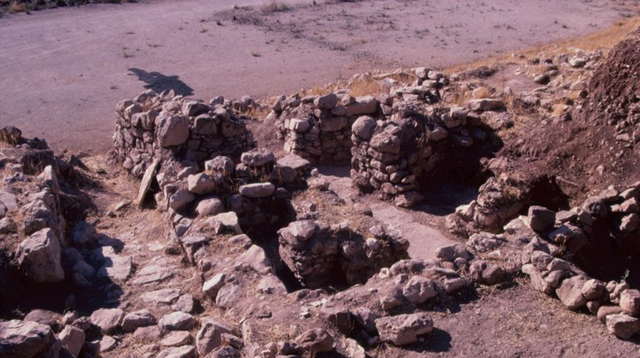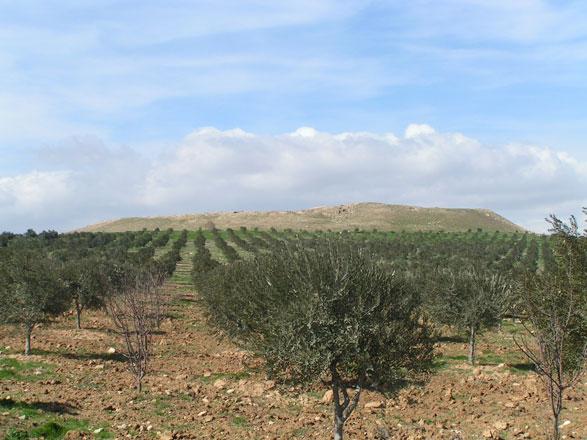You are here
Italian scholar explores ancient herding, hunting practices
By Saeb Rawashdeh - Sep 03,2019 - Last updated at Sep 03,2019

Area with the Shobak Castle seen in the background, October 27, 2013 (Photo courtesy of Mediaeval Petra-Shobak Project)
AMMAN — To reconstruct Jordan’s past, animal remains play a very significant role, according to an Italian zoo-archaeologist.
“Animals, and in particular wild species, can be reliable proxies of environmental conditions and changes,” noted zoo-archaeologist Chiara Corbino, who received her PhD from the University of Siena.
The frequency of gazelles in the archaeological assemblages attest to the fact that they were abundantly available in the vicinity of the sites at that time, Corbino said, adding that in the late 19th to early 20th century, the drastic reduction in the number of gazalle was the result of indiscriminate hunting and rapid habitat loss in the whole of southwest Asia.
Although the frequency of domestic species is influenced by human choices and preferences, the local environment contributes to the selection of the species raised at a site, Corbino continued, noting that the incidence of goats in Ayyubid and Mamluk Jordanian contexts could be indicative of environmental conditions and human subsistence strategies.
“The goat is more adaptable than sheep to semi-arid environments; it requires less pasture than sheep or cattle, and can be also kept in very dry environments if constantly fed by humans,” she said, giving the citadel of Tell Hisban in Madaba as an example.
The identified pathological evidence in sheep and goats from this site could be related to intensive breeding and poor grazing conditions in the semi-arid environments, the researcher outlined.
According to Corbino, the agricultural activities practised in the area in the Mamluk period had probably reduced the extent and quality of available pastures.
“Equids [horse or donkey] and dromedary [also called the Arabian camel] are present at most sites but with very low frequencies,” the scholar said.
There were obvious differences between domesticated animals used for regular diet, pack animals and animals kept for prestige.
“Domestic species are dominant in the Ayyubid and Mamluk archaeological contexts. Overall, the results show that the diet of the inhabitants of the sites relied mainly on goats, followed by sheep, chicken and cattle,” Corbino said.
Due to the complete absence of any pathological evidence related to labour on cattle, donkey, horse and dromedary bones from both periods, the scholar said that the exploitation of these animals for purposes other than food production is improbable.
Furthermore, parrotfish was an important component of the Ayyubid diet, in particular at settlements closer to the Red Sea, but it almost disappeared in the Mamluk period, as it was not particularly appreciated at that time.
“The variety of wild mammals and birds increased in the Mamluk period,” the scholar explained, adding that hunting activities and game meat were a prerogative of the elite.
Moreover, dogs were probably involved in hunting activities too, Corbino said.
“They were important companions in hunting expeditions organised by the Mamluk elite and were considered among the most important animals for hunting together with birds of prey,” the archaeologist stressed.
Gazelle is the only wild species present in all sites and periods, which indicates that even the farming population occasionally engaged in hunting, she said.
Related Articles
AMMAN — Specialisation in livestock management was a significant feature of Transjordan during the Mamluk period (1250-1517), noted a Britis
AMMAN — A well-known Neolithic site of Ain Ghazal is home to around half a million animal bone remains, although only a small fraction
AMMAN — Tell Jalul, located 5km east of Madaba, is the largest tell( hill or mound) that covers 7.2 hectares in central Jordan, said Paul Ra



















